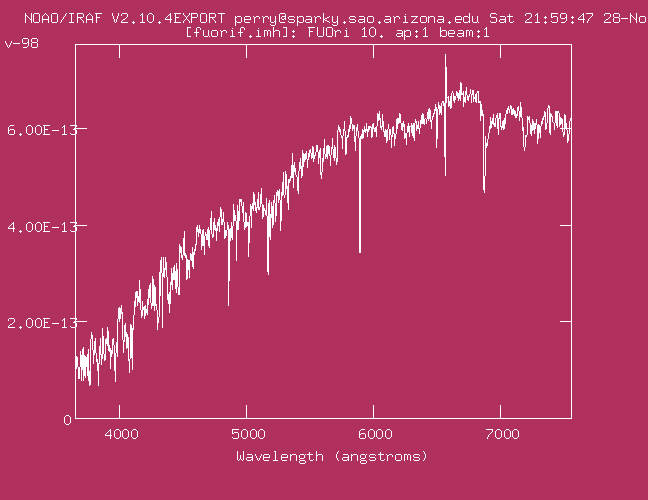 TTau
TTau
 FUOri
FUOri
The optical spectra of PMS stars reveals a wide variety of these phenomenon. Some stars are highly reddened due to extinction from dust and gas. Emission lines are common, resulting from disk accretion, magnetic coronal activity, and excited nebulosity. P-Cyg line profiles result from mass outflows and inverse P-Cyg line profiles from mass inflows. A hallmark feature of young stellar objects is the presence of Lithium (Li 6708Å), as Li is rapidly destroyed after the onset of hydrogen burning. These stars may vary photometrically and spectroscopically.
PMS stars are divided into categories based on their optical spectra, with
types named after the prototype object.
TTauri objects show CaII 3933Å and 3968Å, and H-alpha in emission.
The basic spectral type may be from A through M.
FUOri objects are highly reddened, and show the usual optical absorption
features.
Higher mass stars evolve very quickly. Young OB stars.
Many PMS stars are now known, click here for a short catalog of selected young stellar objects and pre-main sequence stars.